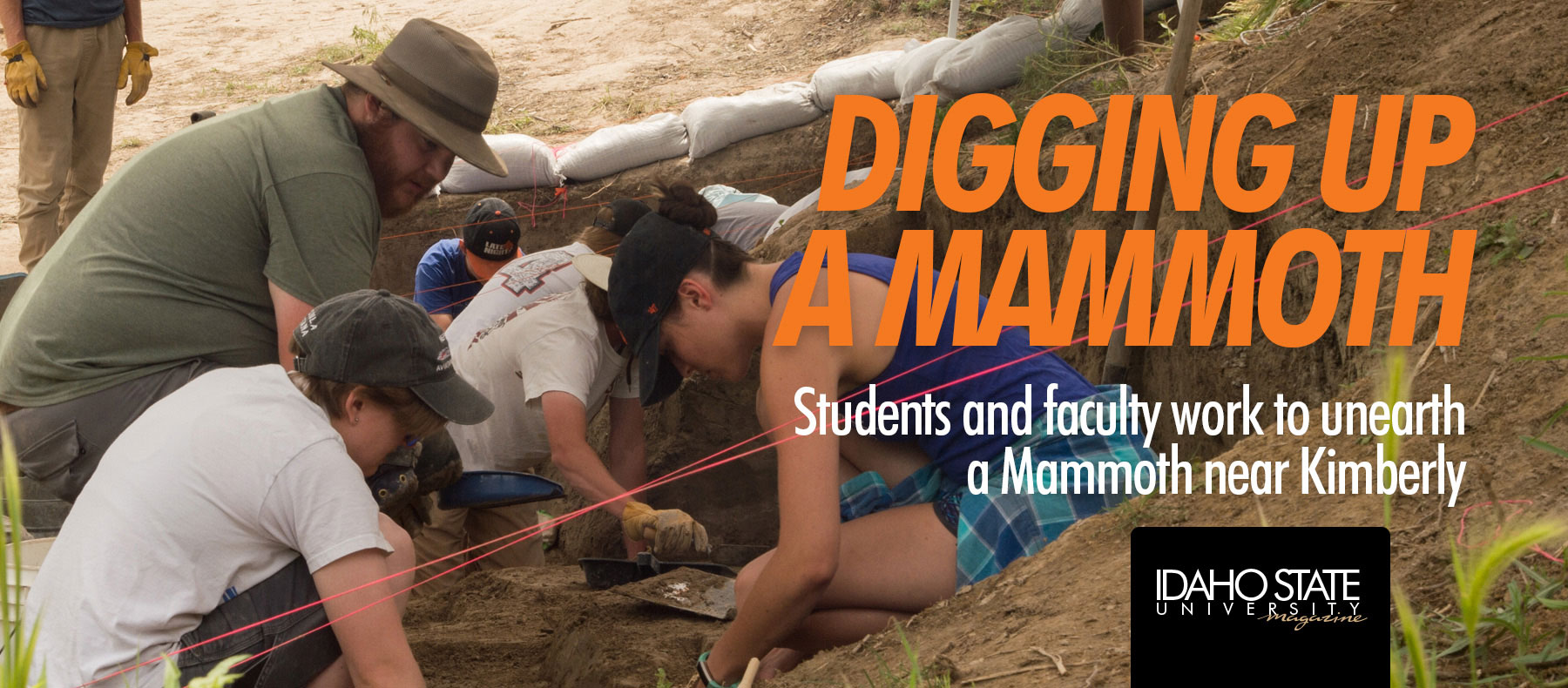
Digging a hole for a backyard pond, Kimberly Idaho resident Joshua Olsen first thought he’d found an old wagon wheel, or perhaps even a grave. After all, the Oregon Trail runs through Olsen’s property.
“Then I got down and examined it and saw that it was laminated and I knew exactly what it was,” Olsen said, referring to the eight-foot long prehistoric mammoth tusk he’d just uncovered. “It was exciting, really exciting.”
Olsen had found the remains of an animal that stood an average of 12 to 14 feet tall at the shoulders and weighed between 18,000 to 20,000 pounds. Mammoths had giant curved tusks and lived in the area throughout the Pleistocene period from around 1.5 million years ago until 10,000 years ago when they went extinct.
His excitement was shared by Idaho State University Anthropology Professor Andy Speer and students during ISU’s 2018 Archaeology Field School, who continued to unearth, excavate and learn about this discovery. Speer held a four-week long excavation this summer and will likely have six- to eight-week long excavations in 2019 and 2020.
The tusk and remains of this animal poses many mysteries. Was it a Mastodon or Mammoth? If it was a Mammoth, was it Woolly or Columbian Mammoth? What was its age and its sex? And, possibly, did humans interact with this particular animal?
The latter possibility, though unlikely, is particularly intriguing to Speer. He had radiocarbon-dated several bone and tusk fragments found at the site, which dated the mammoth between 14,000 and 16,000 years old.
“Humans may have been in the New World as long as 22,000 years ago. That puts this animal within range of humans potentially interacting with the animal in some way: either killing it, scavenging it, or even using bones and/or tusks after it was long dead to make tools,” Speer said.
There have only been a handful of mammoth finds in the world that have had credible links to human interaction. Although the likelihood that humans interacted with this mammoth are slim, the possibility is still important and adds a new element of meticulousness to an already thorough and painstaking recovery process.
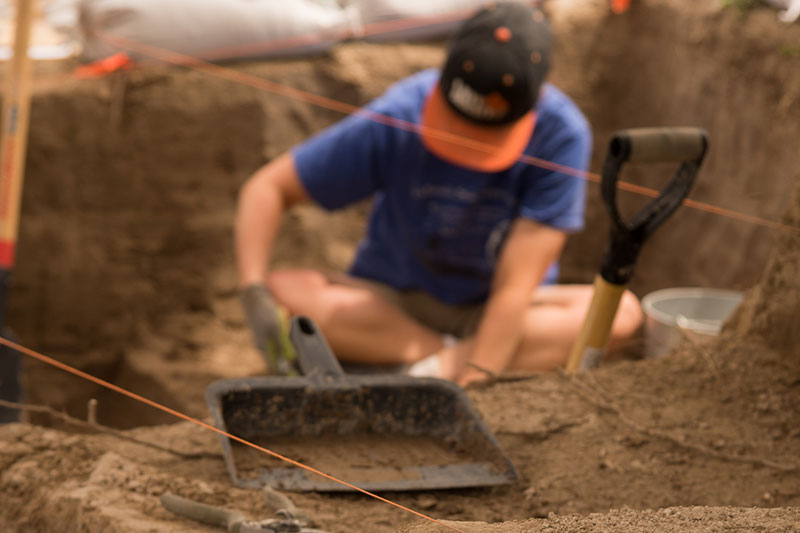
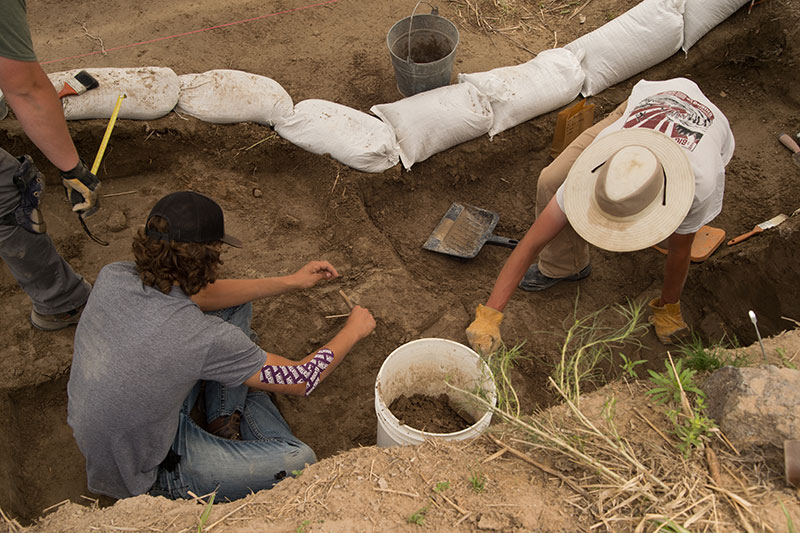
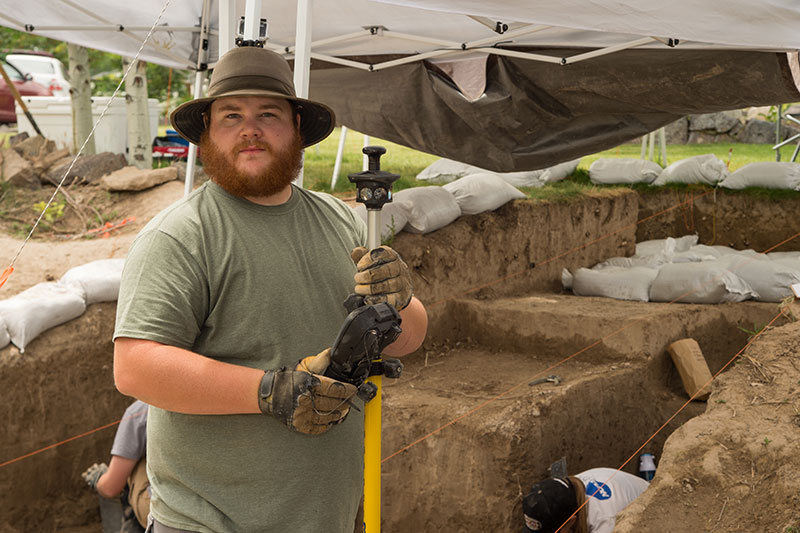
“All those things factor into our strategy for excavation,” Speer said. “If it was older and there wasn’t any potential for human interaction, we could approach it from a different strategy. We wouldn’t be too worried about standing around on the soil, or possibly erasing a stain in the soil that could indicate the butchering of the animals or uncovering a piece of antler or bone used as a projectile point.”
The project’s meticulousness began even before any serious ISU excavation started. Although anthropologists still use classic tools such as shovels, trowels and dirt-sifting boxes, they also employ new, sophisticated tools. When he first began work at the site, Speer ran a ground-penetrating radar over the surface to identify where major sections of bone could be. The radar ensured that Speer and his students would dig in the right area.
This summer, nine students participated in the ISU Archaeology Field School, including high school student Carter Olsen (Joshua and Rebecca Olsen’s son), recent high school graduate Hagen Moore, several ISU undergraduates and two graduate students. The students, who spent about eight hours a day at the site, collectively put in about 1,500 hours of work and excavated and sifted through enough material to fill up a small dump truck.
“They have removed it mostly with hand tools, so they have done an incredible job, not only removing soil and finding bone, but also about learning about the past environment,” Speer said.
The students needed to excavate nearly a meter and a half deep before they get down to the depth the bones are located. The soil over and around the bones tells its own stories.
“The soil tells us a lot of what was going on in the past,” Speer said. “We can see the organic horizon on the top, that goes down to a certain level and then stops, then we have this ancient buried soil, called a paleosol, beneath the modern soil formation, formed over the last 8,000 to 10,000 years or so. A lot of soil develops here from several different processes such as water action, gravity moving dirt around and wind-blown dust.”
“I’m putting to use what I’ve learned about archeology the last few years,” said Bryan Harvey, a senior studying anthropology. “Reading about how archaeologists excavate in units and dig with trowels is one thing, but actually getting to practice it is another thing altogether.”
“It has been awesome and a lot of fun,” said Moore, a freshman studying anthropology. “It is not just digging in the dirt. You have to pay attention to what is happing in the dirt and it is a lot more meticulous than most people probably think.”
The students have excavated through troweling soil and sifting dirt, finding parts of bones and working through tough layers of compact carbonate soil. A 4-inch by 4-inch piece of bone was exposed but not yet recovered.
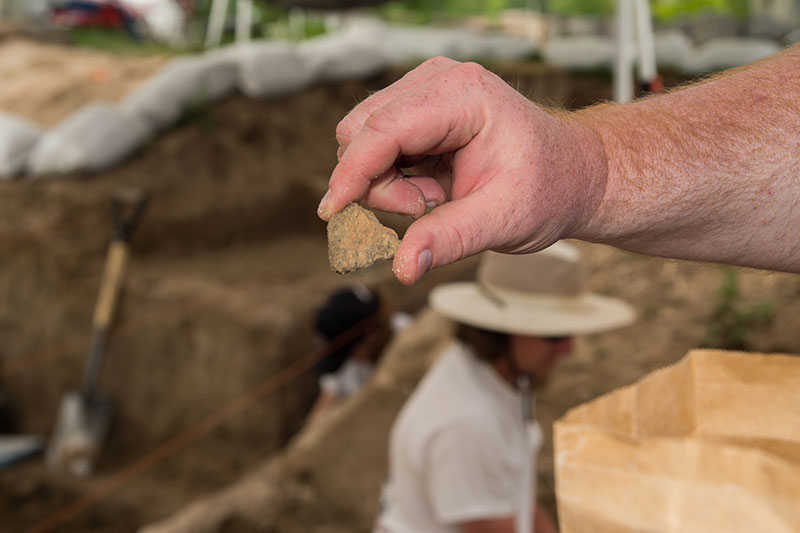
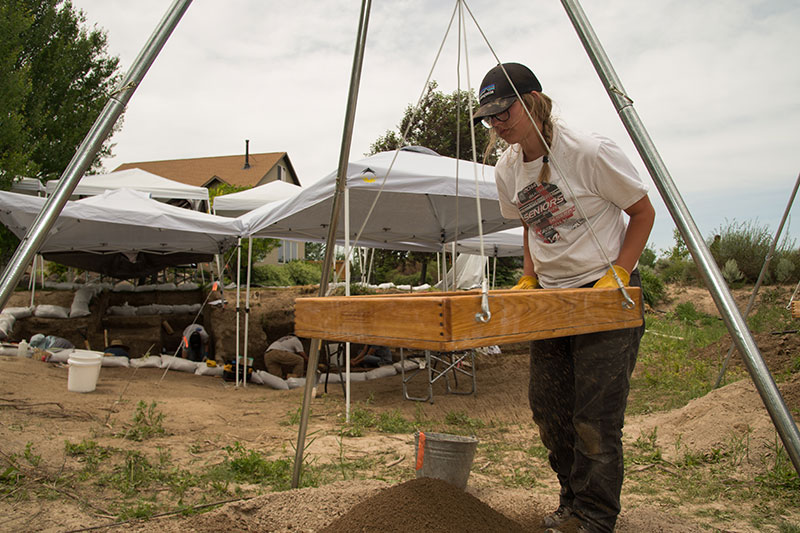
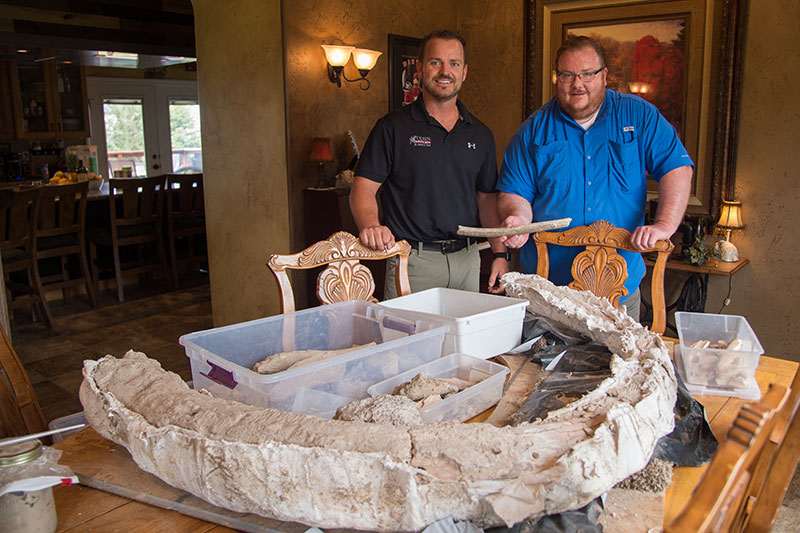
“We have found a couple little sacks of bone, all fragmentary pieces, and we are going to work our way carefully back in time towards the animal and be cautious to not expose it all right away because if we uncovered it and left it, it would quickly turn to dust,” Speer said. “We have to be vigilant about how we preserve this resource. It has been in the ground for 15,000 years so we don’t want to lose it in a couple of afternoons.”
Sometimes it gets really hot and humid when the students are digging. There are bugs that bite and sore muscles from digging, sifting and kneeling for long hours. But these challenges don’t dampen the enthusiasm of the students.
“My least favorite part is the heat and this carbonate layer we are running into here. It is really tough to get through,” said Ethan Kumm, from Malad, who is a second-year anthropology graduate student. “The best part is, I love this. I love being here excavating outside, finding some interesting bones. This is the first time I’ve excavated a mammoth so it is just really exciting.”
“It always ends too soon,” said Daniel Parker, from Hansen, a second-year ISU anthropology graduate student. “But talking with Dr. Speer, I can probably come back next year or the year after and help out.”
None of these archeological activities by ISU would have been possible without the generosity of the Olsen family.
“The Olsen family is super excited about it and they have been very gracious to us for letting us be out here, but also by offering up their home whenever we have needed it, not to mention they’ve allowed us to tear up their beautiful lawn” Speer said. “We are very appreciative for all that they’ve done for us.”
For more information on the future field schools, please visit the ISU Department of Anthropology website or contact Speer directly at speechar@isu.edu

